8. Irréversible (2002)
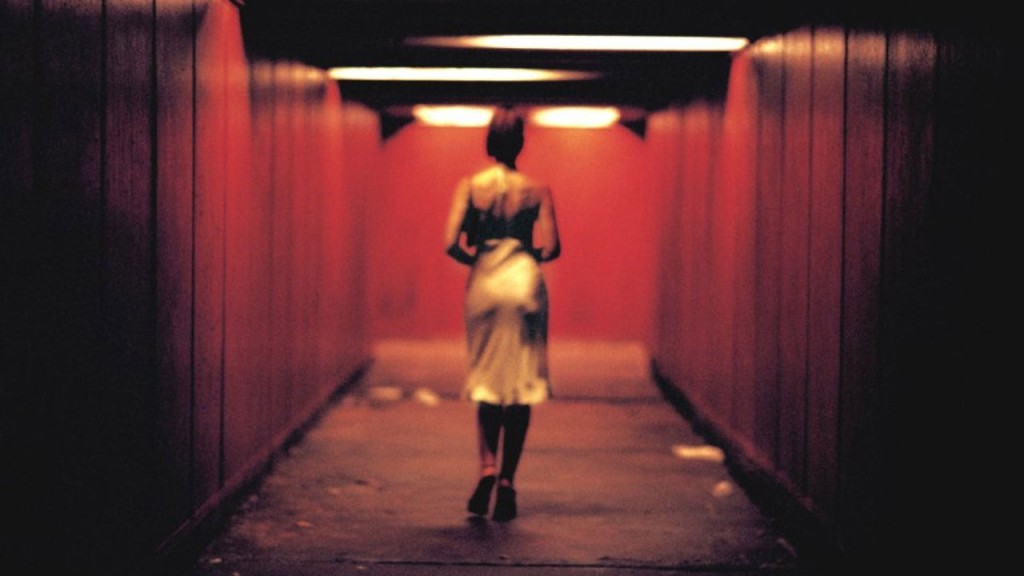
Gaspar Noé’s French Art film employs a non-linear narrative and is essentially told backwards. The film follows three young adults throughout a day in reverse chronological order. There’s Alex (Monica Bellucci) and Marcus (Vincent Cassel), who are a happy couple (and were so at the time in real life as well) as well as Marcus’ best friend Pierre (Albert Dupontel).
This avant-garde film begins with some extreme, unflinching violence. A man’s face is bashed in with a fire extinguisher until long after he is dead.
A camera looks on unflinchingly as a woman is brutally raped and beaten for ten long, unrelenting minutes for what seems to be an eternity in a dark subway tunnel in a stationary camera shot that refuses to cut away and excuse the rape’s violence.
Film Critic Roger Ebert called it “a movie so violent and cruel that most people will find it unwatchable.” but gave it 3 stars (out of 4) and a thumbs up, even though he was generally against violence.
The chronology of the film results in that doesn’t build up to violence as a pay-off but instead tracks back into their lives before they are about to dramatically change. It provides the viewers with foreshadow anxiety which the characters are ignorant of.
The film has also been associated with the New French Extremity movement and the cinéma du corps (“cinema of the body”) especially due to the shaky, vertigo-inducing cinematography which heightens seems to participate in the punching as much a Marcus and Pierre do. The soundtrack was composed by the electronic musician Thomas Bangalter, who is best known as half of the duo Daft Punk.
9. Funny Games (1997)
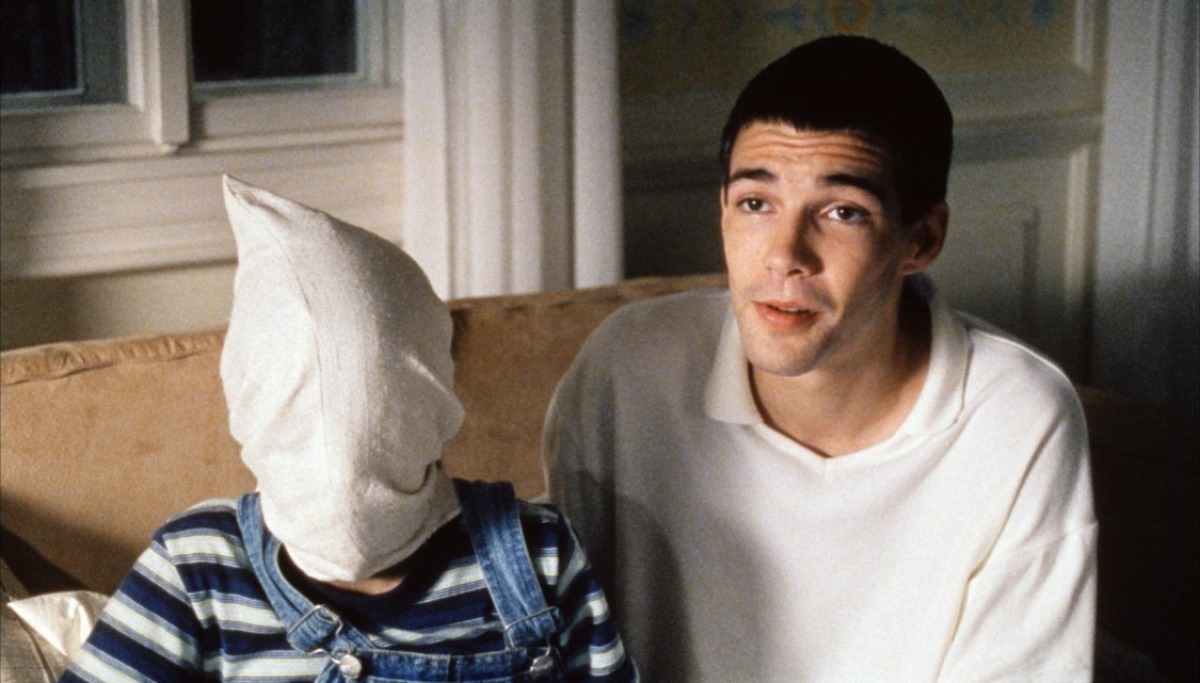
Michael Haneke’s Austrian psychological thriller follows a wealthy family; George (Ulrich Mühe), his wife Anna (Susanne Lothar – who was married to Mühe in real life as well), their son George Jr. (Stefan Clapczynski), and their dog Rolfi, as they arrive at their holiday home beside a lake in Austria.
They soon meet two young Viennese men, Peter (Frank Giering) and Paul (Arno Frisch), who begin imposing themselves on the family. They break their phone and ruin all their eggs until Anna becomes so frustrated that she asks them to leave. They don’t.
What follows is both hard to watch and interesting to see – the young men take the family hostage and forces them to participate in games of pain for their enjoyment. Paul asks if the family wants to bet whether they will still be alive by 9:00 the next morning, though he doubts that they will win.
Paul is definitely the more alpha of the two – he makes fun of and bosses Peter around nearly as much as he does the family. They are constantly talking as the family’s mouths are gagged, making most of the dialogue humorous and light-hearted even though the visuals are brutal and saddening.
Paul often breaks the fourth wall and addresses the audience, as if he is fully aware that he is in a film and thus has complete power of the story, of which he frequently states must follow the standards of movie plot development with suspense rules, three acts and all. The film blurs the line between fiction and reality not only through the self-aware Paul, but through Peter’s references to the difference between fiction and reality himself.
The film was entered into the 1997 Cannes Film Festival. In 2007 it was remade in America almost shot by shot by Haneke again, but this time with a different, English speaking cast and a mostly American crew.
10. Who’s Afraid Of Virginia Woolf? (1966)
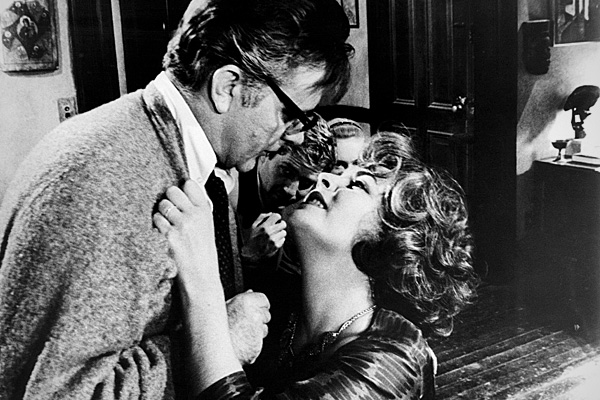
The first of Broadway’s Mike Nichols’s feature films, this black comedy-drama adaptation of the play of the same title by Edward Albee was ridiculously successful for a directorial debut with thirteen Academy Award nominations (including Best Picture, Best Director, and Best Actor/Actress and Supporting Actor/Actress), being nominated in every eligible category that year.
The film focuses on the unstable relationship of associate history professor George (Richard Burton) and his hard-drinking wife Martha (Elizabeth Taylor). They each taunt each other with dangerous emotional games which they participate in due to their shared troubled past.
After a night of too much drinking at a party, Martha invites a young married couple over to their house, who serve as the audience to their destructive, forceful mutual hatred and troubled emotions which mainly find their outlet through harsh verbal abuse and embarrassment. The guests; Nick (George Segal) and Honey (Sandy Dennis) become entangled in their damage all throughout the night.
The film won five Oscars of the thirteen, including a second Oscar for Best Actress for Taylor, an Academy Award for Best Supporting Actress for Dennis, Best Art Direction (Black and White), Best Cinematography (Black and White) and Best Costume Design (Black And White).
11. Rope (1948)

Probably the most experimental of all of Alfred Hitchcock’s films, this psychological crime thriller appears to be one continuous shot through editing multiple long takes up to 10, continuously panning from actor to actor, and tracking their movements.
Two brilliant young men, Brandon Shaw (John Dall) and Phillip Morgan (Farley Granger), strangle to death a former classmate, David Kentley (Dick Hogan), in their apartment – where the entire film takes place.They commit the crime as an intellectual exercise so as to prove to themselves that they could commit the perfect murder.
They hide the body in a large wooden chest just in time to host a dinner party with the victim’s family and fiancée, as well as their prep school housemaster Rupert Cadell (James Stewart).
Cadell probably imparted the intellectual concepts of Nietzsche’s Übermensch, and De Quincey’s art of murder into Shaw and Morgan as a means of showing one’s superiority over others. However, he is unaware that they have used his hypothetical rationale to excuse themselves from murdering their friend.
12. Nine Queens (2000)
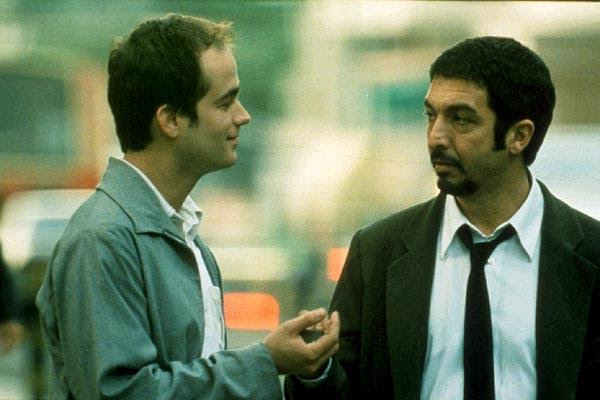
Fabián Bielinsky’s Argentine crime drama film centres on two con artists, Juan (Gastón Pauls) and Marcos (Ricardo Darin), who meet at a convenience store after Juan messes up a scam and Marcos successfully saves him by pretending to be a police officer with the help of a toy gun he had just stolen.
The two bond and agree to be partners for the rest of the day, mainly so Marcos can show Juan a couple of tricks that may help him get some money for his father, who is in prison.
After a couple of short-cons and bets, the two seem to prove themselves a very good team – Marcos isn’t afraid to cause a scene while Juan is sympathetic and is much more of a people-person.
Then, a seemingly perfect scheme pops up in Marcos’s sister’s hotel. An incapacitated former business associate of Marcos needs his help in selling a counterfeit copy that he made of some very rare and valuable stamp collection, “The Nine Queens”.
Since Sandler needs to go to hospital, he cannot meet the mark, Gandolfo, a rich Spaniard who is facing deportation and needs to flee the country quickly with whatever valuables he can. Juan convinces Marcos that he needs him, but remains very sceptical whether he is in fact being conned himself, since the whole thing seems too good to be true.
Hardly predictable, the plot twists around into satisfying dark comedy-drama full of smart dialogue, deadpan humour and quickly developed characters all within two days. The film was nominated for 28 awards and won 21 of them, and is now considered a classic in the country’s film history.
13. Do The Right Thing (1989)
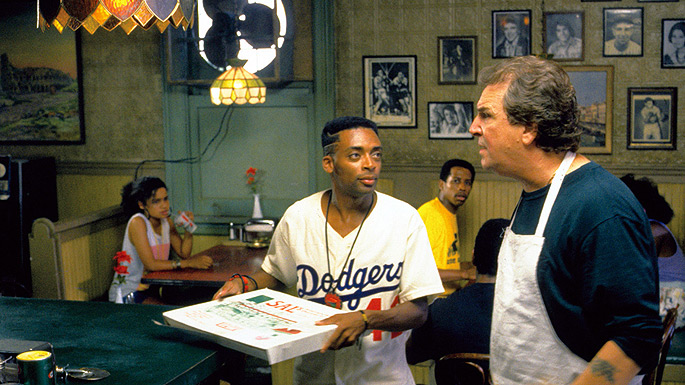
Spike Lee’s comedy-drama tells the microcosmic story of a Brooklyn neighborhood’s racial tension during the hottest day of summer which slowly simmers until a tragic boiling point is reached. While Lee’s “25th Hour” also takes place within 24 hours but “Do The Right Thing” has become an undeniable classic.
The film mainly follows the 25-year-old pizza delivery man Mookie (Spike Lee himself), who together with his sister, Jade (Joie Lee), his girlfriend Tina (Rosie Perez) and his son live in a Brooklyn neighbourhood full of distinct, strong personalities like Mother Sister (Ruby Dee), who watches the neighborhood from her brownstone; Radio Raheem (Bill Nunn), who blasts Public Enemy on his boombox wherever he goes; Smiley (Roger Guenveur Smith), a mentally disabled man, who constantly goes around the neighborhood trying to sell pictures of Malcolm X and Martin Luther King, Jr and the local disc jockey (Samuel L. Jackson), who seems like the neighborhood’s soundtrack.
Mookie works for Sal (Danny Aiello), the longstanding pizzeria’s Italian-American owner, whose older son Pino (John Turturro) intensely dislikes blacks, and hence Mookie.
The impending tragedy can be slowly anticipated throughout the long, hot summer day, since the characters’ stereotyping, misunderstandings, suspicions, insecurities build together until there is no going back. However, while this sounds bleek, Lee succeeds in not only through translating dark social realism, but through humour, music, love and most inportantly empathy.
The film received numerous accolades and awards, including an Academy Award nomination for Lee for Best Original Screenplay and one for Best Supporting Actor for Aiello’s portrayal of Sal.
14. After Hours (1985)
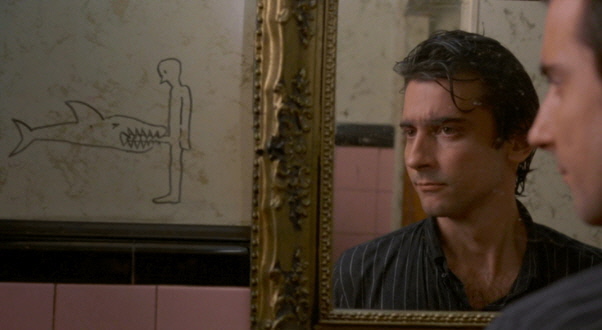
Martin Scorsese’s black comedy film follows Paul Hackett (Griffin Dunne), as he experiences a series of misadventures while making his way home from New York City’s SoHo district during the night. From losing the $20 bill he was going to pay for his cab and becoming penniless to being mistaken for a burglar and being relentlessly pursued by a mob of local residents, his night is tormented by horrific coincidences and a lot of bad luck.
The bizarre dream logic and continuous nightmare that is Hackett’s life after hours is both ridiculously frustrating and funny at the same time. The film marked the first time Scorsese collaborated with the German cinematographer Michael Ballhaus, whom he later frequently worked with. Scorsese directed this movie in between production struggles over “The Last Temptation Of Christ” and took over for Tim Burton who was originally set to direct.
Paul meets multiple people after work including the Henry Miller loving Marcy Franklin (Rosanna Arquette) in a local café in New York, her bagel paperweight sculptor roommate Kiki Bridges (Linda Fiorentino), the infatuated bar waitress Julie (Teri Garr), the bar owner Tom Schorr (John Heard) and burglars, and punks who want to shave his head into a Mohawk and the police. It’s a long and very eventful life.
15. Clerks (1994)
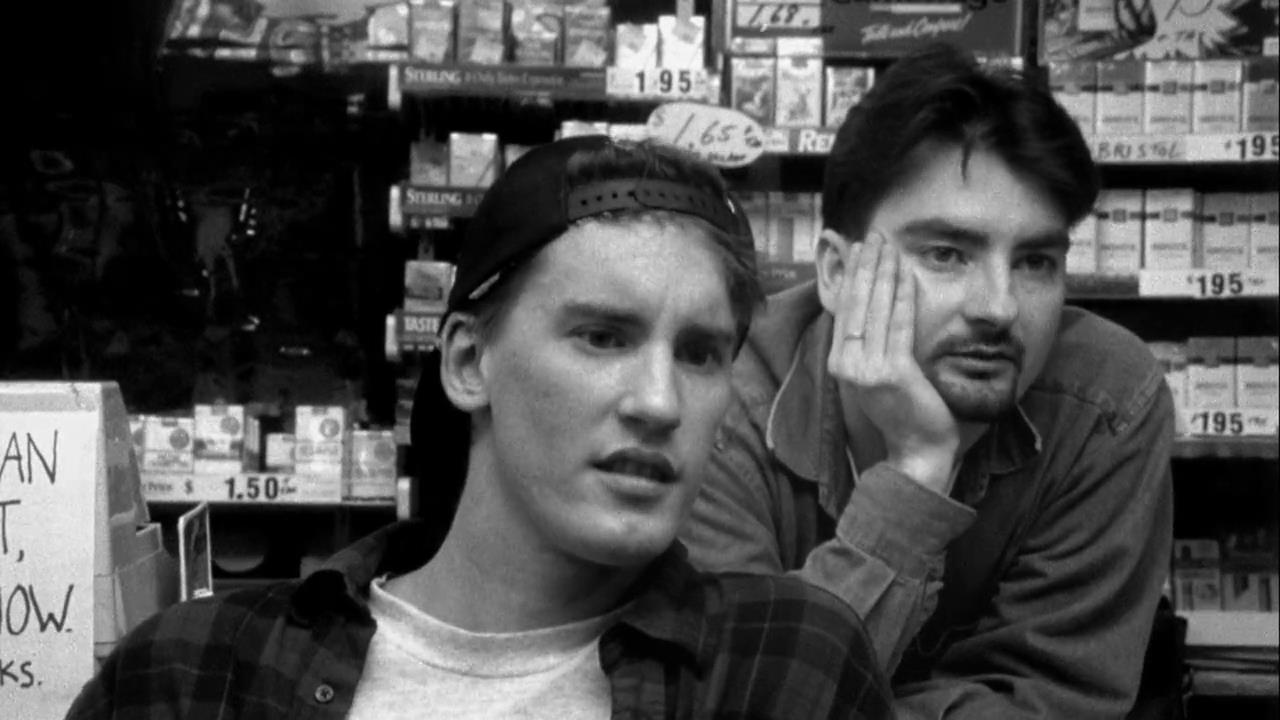
Kevin Smith’s grungy directial debut cult hit follows Dante Hicks who has to clock in a full day at a convenience store on his day off. He and his friend Randal, who works next door in the video store, carry the film with constant complaining, hockey breaks and struggle to understand their encounters with customers who are all test their patience in the strangest of ways from checking every egg to find the perfect dozen, to claiming their bathroom after buying a porn magazine.
They are tired, unkempt, bored and underpaid but they detach from their testing jobs through conversation – where hardly anything is off-limits. They go from discussing whether or not the contractors working on the second Death Star when it was destroyed at the end of Return of the Jedi were innocent victims to girl problems – of which Dante has a lot.
Their lives are intermingled with a couple of slackers and pot dealers, Jay (Jason Mewes) and Silent Bob (Kevin Smith himself) who regularly park outside the convenience store.
This black-and-white comedy is the first entry in Smith’s “View Askewniverse” which is a fictional universe which most of his films are set in. Jay and Silent Bob appear in most of them, like “Dogma” or “Mallrats” as well as Clerks sequels – which continue Dante’s and Randel’s journey to survive another dull day.